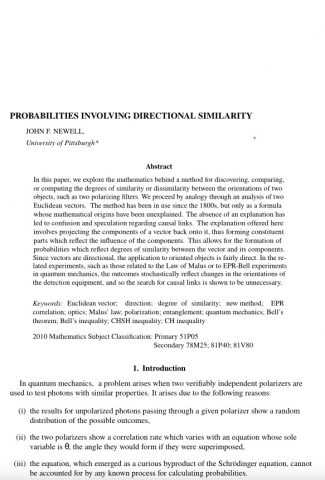
Originally published in The Mathematical Scientist 39 37-44 (2014) and 41 74 (2016).
In this paper, we explore the mathematics behind a method for discovering, comparing, or computing the degrees of similarity or dissimilarity between the orientations of two objects, such as two polarizing filters. We proceed by analogy through an analysis of two Euclidean vectors. The method has been in use since the 1800s, but only as a formula whose mathematical origins have been unexplained. The abscence of an explanation has led to confusion and speculation regarding causal links. The explanation offered here involves projecting the components of a vector back onto it, thus forming constituent parts which reflect the influence of the components. This allows for the formation of probabilities which reflect degrees of similarity between the vector and its components. Since vectors are directional, the application to oriented objects is fairly direct. In the related experiments, such as those related to the Law of Malus or to EPR-Bell experiments in quantum mechanics, the outcomes stochastically reflect changes in the orientations of the detection equipment, and so the search for causal links is shown to be unnecessary.
